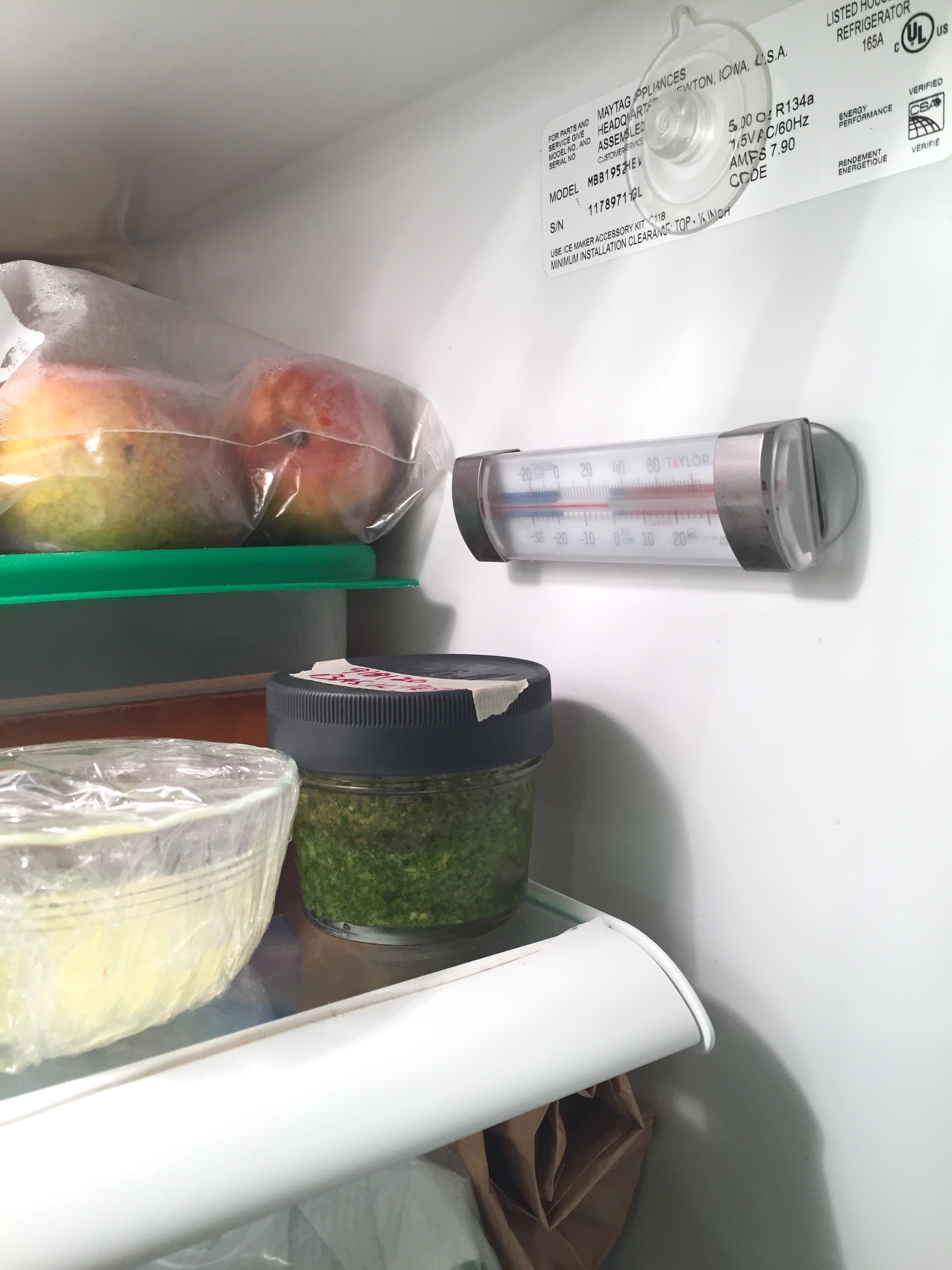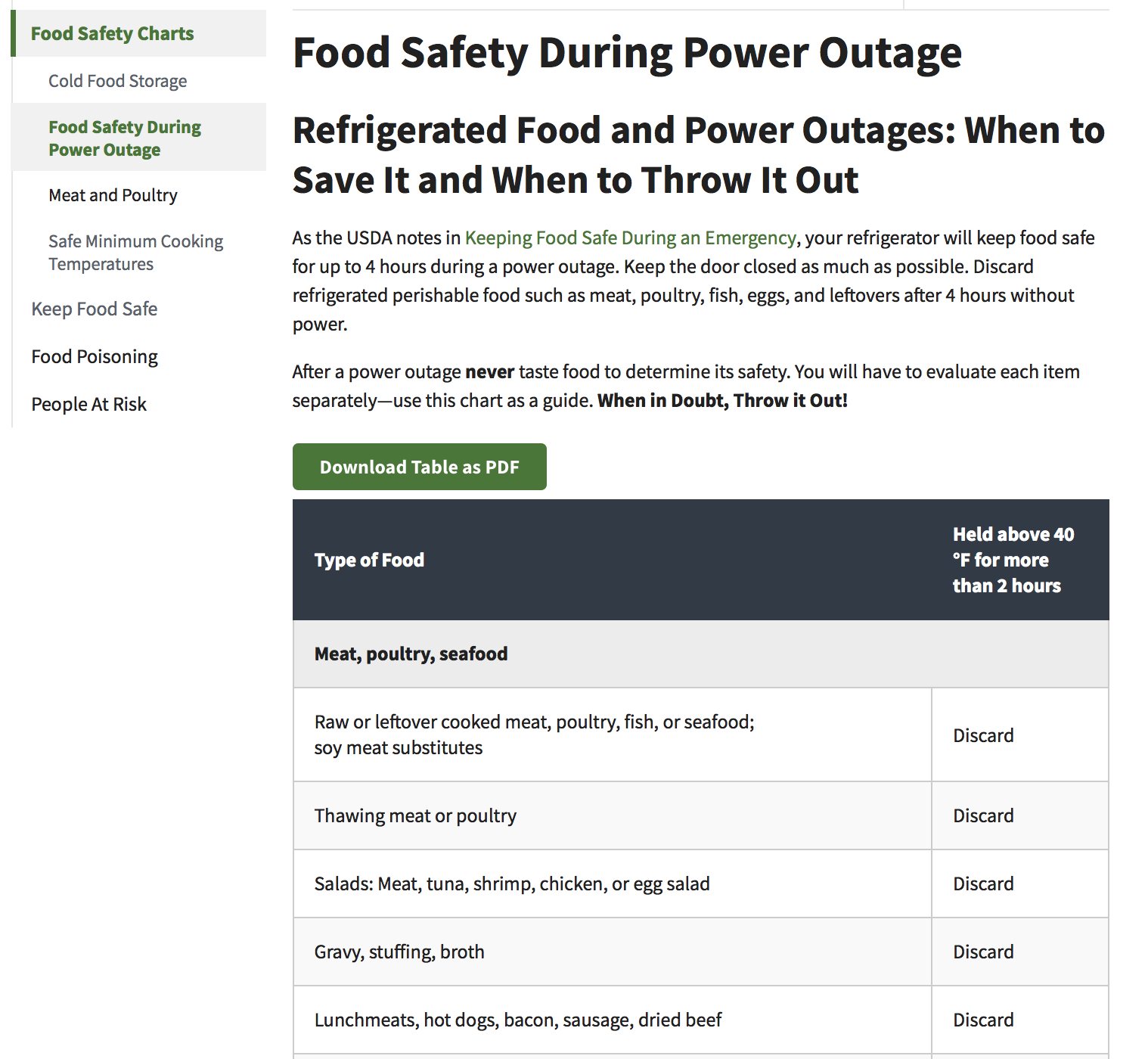Typically I clean out my refrigerator on Wednesdays (hence the Waste-less Wednesday posts) to make room for the fresh CSA box I pick up on Thursdays.
This week, I got an early start on that project thanks to a Labor Day weekend power outage—which of course, happened during the worst heat wave of the year. And wouldn’t you know that I had already spent hours on mise en place for recipes I had planned to make on Labor Day? I had containers of cut fruit ready for compotes and sorbet, cooked rice for one-bowl lunches, and hard-to-get end-of-season farm eggs for assorted baking projects. Not to mention that I was in the middle of making a curried squash soup—cooked, but not yet puréed to the silky consistency I’d been craving—when the power cut out.
PG&E had said that there would be no Bay Area outages during the holiday weekend, so I wasn’t exactly prepared for this mini crisis. My neighborhood had two teaser outages of an hour each during the weekend, but the big one came at about 6:30 p.m. on Sunday and lasted 20 hours, after a tree branch fell on a transformer, taking the lines down.
After a couple of hours without power, I thought things might be alright, as long as I kept the refrigerator door shut (after a quick open-and-close to grab a bottle of rosé and some salad fixings immediately after the outage). But as two hours became four, then six, hope dwindled because I knew that the interior temperature of my refrigerator (and likely the freezers, too) was going up by the hour, pushing perishable food into the danger zone. sigh. The thought of tossing so much fresh food! By the time the power came back on, the fridge’s interior temperature was 50-something degrees.
Even with 20 years of food-safety certification in my back pocket, there were a few items that gave me pause. So, maybe you’re in the same boat and wondering what to keep and what to toss when the power goes out? If you find yourself with a warmer-than-usual fridge or freezer after a power outage, the first thing to know about food safety is that time and temperature matter.
Bacteria love warmer temperatures and will increase rapidly as storage temperatures rise into the temperature danger zone of 40°F–140°F—which is why you want to make sure you’re storing food at correct temperatures to start with.
If you don’t have a thermometer in your refrigerator and freezer, I highly recommend getting one for each space ASAP. I use this one by Taylor; it’s inexpensive and will give you a good indicator of what the temp is.

If you want something fancier, check out this ThermoWorks thermometer, recommended by America’s Test Kitchen.
Make sure to keep your fridge at 40°F or lower and your freezer at 0°F or lower. Maintaining these temperatures gives you a bit of insurance when the power goes out, as long as you keep refrigerator and freezer doors closed. This nifty infogram from the Centers for Disease Control and Prevention (CDC) spells it out:

Every time you open the door to grab something, though, you’ll affect the temperature, decreasing the amount of time food will have in safe zone.
So, what if you’ve experienced a long power outage and ended up with a fridge or freezer full of food that might be in the danger zone? Foodsafety.gov can help you figure out what to toss or keep with two helpful charts: one for refrigerated foods and one for frozen foods.

The charts are also downloadable in PDF format to keep on hand for reference or print and use a checklist should you find yourself having to do a major cleanout.
The documents cover most food items (including condiments like fish sauce—who knew?), taking the guess work out. Cut fruit, meat or seafood soups, cooked rice, leftover pizza: they all have to go. Doesn’t matter if they look or smell ok; if they’ve been in the temperature danger zone (above 40°F) for more than two hours, toss ’em.
In truth, it felt like a waste to dump so much food, especially given not only the time and money spent on my end, but also the farm labor that went into growing, harvesting, and delivering that food. But foodborne illness is no joke. Been there, done that. I’m with the CDC on this one: “When in doubt, throw it out.”

